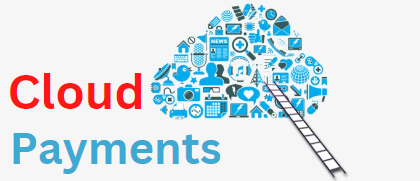Understanding the Cost of Cloud Payment Services
Cloud payment services have revolutionized the way businesses handle transactions and manage their financial operations. With the increasing popularity of e-commerce and online payments, cloud payment services have become an essential tool for businesses of all sizes. These services allow businesses to securely process payments, manage customer data, and streamline their financial processes.
Cloud payment services are hosted on remote servers, allowing businesses to access their payment infrastructure through the internet. This eliminates the need for businesses to invest in expensive hardware and software, as well as the need for dedicated IT staff to maintain and update the payment systems. Instead, businesses can rely on the expertise and infrastructure of cloud payment service providers.
Factors Affecting the Cost of Cloud Payment Services
Several factors can influence the cost of cloud payment services. Understanding these factors is crucial for businesses to make informed decisions and optimize their payment processing costs. Some of the key factors affecting the cost of cloud payment services include:
- Transaction Volume: The number of transactions processed through the cloud payment service can significantly impact the cost. Most cloud payment service providers charge a fee per transaction, so businesses with high transaction volumes may incur higher costs.
- Payment Methods: Different payment methods, such as credit cards, debit cards, and digital wallets, may have varying processing fees. Businesses should consider the payment methods they offer and the associated costs when choosing a cloud payment service provider.
- Integration Complexity: Integrating a cloud payment service with existing business systems can be complex, depending on the level of customization required. The complexity of integration can affect the cost of implementation and ongoing maintenance.
- Security and Compliance: Payment security and compliance requirements are critical considerations for businesses. Cloud payment service providers that offer robust security measures and compliance certifications may charge higher fees.
- Scalability: The ability to scale the payment infrastructure to accommodate business growth is an important factor to consider. Cloud payment service providers may charge additional fees for scaling up or down the payment processing capacity.
Understanding the Pricing Models of Cloud Payment Services
Cloud payment service providers offer various pricing models to cater to the diverse needs of businesses. It is essential for businesses to understand these pricing models to choose the most cost-effective option. Some common pricing models for cloud payment services include:
- Flat Fee: In this model, businesses pay a fixed fee per transaction, regardless of the transaction amount. This model is suitable for businesses with a consistent transaction volume and average transaction value.
- Tiered Pricing: Tiered pricing models categorize transactions into different tiers based on their value. Each tier has a different processing fee, with higher-value transactions incurring lower fees. This model is beneficial for businesses with varying transaction values.
- Interchange Plus: Interchange plus pricing involves passing on the actual interchange fees charged by card networks to the business, along with a fixed markup fee from the cloud payment service provider. This model provides transparency and can be cost-effective for businesses with high transaction volumes.
- Subscription Pricing: Some cloud payment service providers offer subscription-based pricing, where businesses pay a fixed monthly or annual fee for unlimited transactions. This model is suitable for businesses with high transaction volumes and predictable payment processing needs.
Hidden Costs of Cloud Payment Services
While cloud payment services offer numerous benefits, businesses should be aware of potential hidden costs. These costs can impact the overall cost-effectiveness of using cloud payment services. Some common hidden costs to consider include:
- Setup and Integration Fees: Some cloud payment service providers may charge setup and integration fees to onboard businesses onto their platform. These fees can vary depending on the complexity of integration and customization required.
- Data Storage and Retrieval Fees: Storing and retrieving transaction data from the cloud payment service provider’s servers may incur additional fees. Businesses should consider the long-term costs of data storage and retrieval when choosing a provider.
- Chargeback Fees: Chargebacks occur when customers dispute a transaction and request a refund. Cloud payment service providers may charge fees for managing chargebacks, which can add to the overall cost.
- Currency Conversion Fees: If a business operates in multiple countries or accepts payments in different currencies, currency conversion fees may apply. These fees can vary depending on the cloud payment service provider and the currencies involved.
Comparing the Cost of Cloud Payment Services with Traditional Payment Solutions
When evaluating the cost of cloud payment services, it is essential to compare them with traditional payment solutions. Traditional payment solutions, such as in-house payment processing systems or third-party payment processors, may have their own cost considerations. Some key points to consider when comparing the cost of cloud payment services with traditional payment solutions include:
- Infrastructure Costs: Traditional payment solutions often require businesses to invest in hardware, software, and IT infrastructure. Cloud payment services eliminate these upfront infrastructure costs, making them more cost-effective for businesses.
- Maintenance and Upgrades: With traditional payment solutions, businesses are responsible for maintaining and upgrading their payment systems. This can involve additional costs for IT staff, software updates, and hardware maintenance. Cloud payment services handle these tasks, reducing the maintenance and upgrade costs for businesses.
- Scalability: Scaling up or down the payment infrastructure with traditional payment solutions can be time-consuming and costly. Cloud payment services offer scalability, allowing businesses to adjust their payment processing capacity as needed without incurring significant costs.
- Security and Compliance: Ensuring payment security and compliance with industry standards can be challenging and costly for businesses using traditional payment solutions. Cloud payment service providers often have robust security measures and compliance certifications in place, reducing the burden and cost of maintaining security and compliance.
Strategies to Optimize the Cost of Cloud Payment Services
To optimize the cost of cloud payment services, businesses can implement several strategies. These strategies can help reduce unnecessary expenses and maximize the value derived from using cloud payment services. Some effective strategies to optimize the cost of cloud payment services include:
- Analyze Transaction Volume: Businesses should analyze their transaction volume and choose a pricing model that aligns with their needs. For example, businesses with high transaction volumes may benefit from a flat fee or subscription-based pricing model.
- Negotiate Fees: It is worth negotiating fees with cloud payment service providers, especially for businesses with significant transaction volumes. Providers may be willing to offer discounted rates or customized pricing plans to attract and retain high-volume clients.
- Monitor and Manage Chargebacks: Chargebacks can be costly for businesses, as they often involve fees and potential revenue loss. Implementing effective fraud prevention measures and providing excellent customer service can help minimize chargebacks and associated costs.
- Optimize Payment Methods: Businesses should analyze the payment methods they offer and their associated processing fees. By optimizing the mix of payment methods, businesses can reduce processing costs and cater to customer preferences.
- Regularly Review and Compare Providers: The cloud payment service market is competitive, with multiple providers offering different pricing structures. Regularly reviewing and comparing providers can help businesses identify cost-saving opportunities and ensure they are getting the best value for their money.
Security Considerations and Cost Implications in Cloud Payment Services
Security is a critical consideration when using cloud payment services, as any security breach can have severe financial and reputational consequences. While cloud payment service providers invest heavily in security measures, businesses should also take proactive steps to protect their payment infrastructure. Some security considerations and their cost implications in cloud payment services include:
- Data Encryption: Encrypting sensitive payment data is essential to protect it from unauthorized access. Implementing robust encryption protocols may involve additional costs, such as acquiring encryption software or upgrading hardware.
- Compliance Certifications: Businesses operating in regulated industries may need to comply with specific security standards and obtain certifications. Achieving and maintaining these certifications can involve costs for audits, assessments, and ongoing compliance efforts.
- Fraud Prevention Tools: Investing in fraud prevention tools and services can help businesses detect and prevent fraudulent transactions. While these tools may incur additional costs, they can save businesses from significant financial losses due to fraud.
- Data Backup and Disaster Recovery: Regularly backing up payment data and implementing disaster recovery measures are crucial for business continuity. Cloud payment service providers may offer data backup and disaster recovery services, but businesses should consider the associated costs.
Frequently Asked Questions about the Cost of Cloud Payment Services
Q.1: Are there any hidden costs associated with cloud payment services?
Yes, there can be hidden costs associated with cloud payment services, such as setup and integration fees, data storage and retrieval fees, chargeback fees, and currency conversion fees. Businesses should carefully review the pricing structure and terms of service to identify any potential hidden costs.
Q.2: How can businesses optimize the cost of cloud payment services?
Businesses can optimize the cost of cloud payment services by analyzing their transaction volume, negotiating fees with providers, monitoring and managing chargebacks, optimizing payment methods, and regularly reviewing and comparing providers.
Q.3: What security considerations should businesses have when using cloud payment services?
Businesses should prioritize data encryption, compliance certifications, fraud prevention tools, and data backup and disaster recovery measures when using cloud payment services. While providers offer security measures, businesses should also take proactive steps to protect their payment infrastructure.
Q.4: How can businesses compare the cost of cloud payment services with traditional payment solutions?
To compare the cost of cloud payment services with traditional payment solutions, businesses should consider infrastructure costs, maintenance and upgrade expenses, scalability, and security and compliance requirements. Cloud payment services often offer cost advantages in these areas.
Conclusion
Understanding the cost of cloud payment services is crucial for businesses to make informed decisions and optimize their payment processing costs. Factors such as transaction volume, payment methods, integration complexity, security and compliance, and scalability can influence the cost of cloud payment services. By analyzing pricing models, considering hidden costs, comparing with traditional payment solutions, and implementing cost optimization strategies, businesses can make the most cost-effective choices.
Additionally, businesses should prioritize security considerations and be aware of the cost implications of implementing robust security measures. Real-world case studies and frequently asked questions provide practical insights into cost analysis in cloud payment services. Ultimately, businesses that carefully evaluate and manage the cost of cloud payment services can enhance their financial operations and provide a seamless payment experience for their customers.











